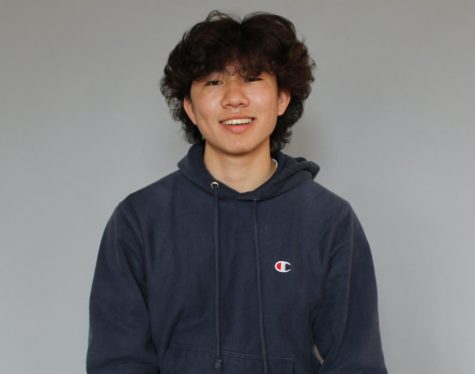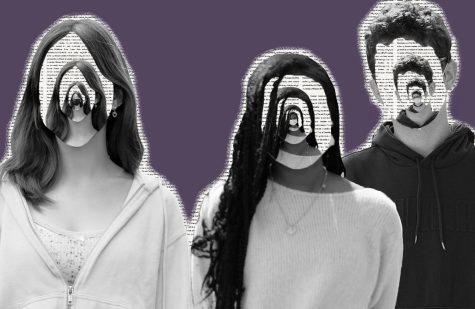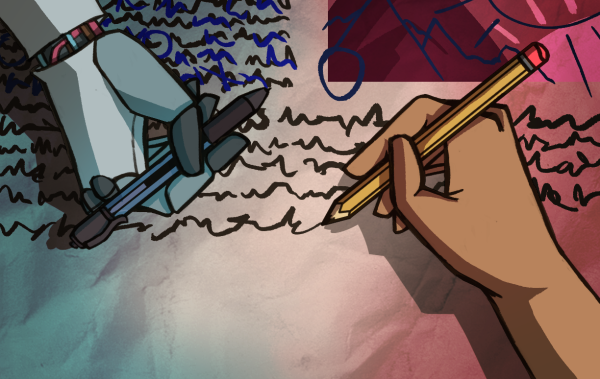A flipped classroom prompts flipped responses
Senior Ember Draffin hops off the bus, flustered. It’s already 8 p.m., and Draffin has just arrived home. She is exhausted after a long, draining day filled with classes and extracurricular activities. As she collapses into her chair, Draffin suddenly remembers the hours of video lectures she must watch for homework on top of all of her other assignments. Frustrated, she pulls out her laptop and presses play on the first video. She can’t help but get deja vu from distance learning and the hours she would spend in her room staring at a screen watching her teachers.
Draffin is just one of the many Lowell students who feel overburdened by the addition of video lectures to their traditional homework load.
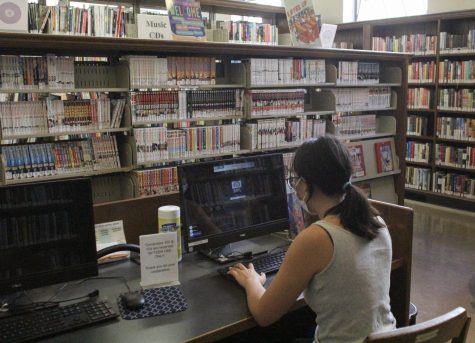
As Lowell transitions back to in-person learning, some teachers have continued using instructional tools from distance learning in their classes. While these teaching methods can be a positive addition to the classroom for both teachers and students, many students are finding some of these methods, especially video lectures, an undue burden.
When Lowell closed its campus in March 2020 due to the COVID-19 pandemic, traditional systems of in-person learning were rendered ineffective online. This forced teachers to modify their teaching methods to fit the parameters of a digital classroom, changing test procedures, homework deadlines, adapting to google classroom and other digital tools. Additionally, to limit the amount of time students spent on screens, online classes were reduced to 35 minutes — 20 minutes shorter than classes prior to distance learning. With less synchronous class time with students, teachers tried to prioritize discussions, presentations, and other activities with student participation. Lectures were moved to asynchronous blocks and recorded for students to watch as videos. Through trial and error, teachers morphed their instructional methods and students adapted to new ways of learning.
Now that school is back in person, one of the major distance learning tools that teachers have incorporated into in-person learning is the flipped classroom model. A flipped classroom is a teaching model where students are introduced to new content through video lectures at home and practice working through it in the classroom. According to Monty Worth, an AP Government and Economics teacher who utilizes the flipped classroom system, this way of formatting a classroom existed before distance learning, despite it gaining popularity among teachers during that time. Because of its effectiveness, Worth has noticed the flipped classroom model continuing to be used by multiple other teachers this year. “We’ve realized that we can use a lot of those lectures that we made into videos last year,” Worth said. “It’s great to have them as a resource.” Worth has assigned several lectures that he filmed over distance learning as homework, which has provided him more class time for discussions about the material the following day.
For Worth, the flipped classroom style of teaching has been a success so far. He’s found that students engage with each other a lot more during class because, with the lectures assigned as homework, there’s more time in class to talk. “We have more class time to do simulations, to have students do debates and discussions, where students are more active,” Worth said.
AP Statistics teacher Michael Ambrose is another teacher using the flipped classroom approach. Ambrose assigns a video lecture almost every day for students to watch at home, giving students the entire class time to work in groups on practice problems. “There’s no trying to figure out problems on your own at home,” Ambrose said. “We do the work in class instead of students going home and doing it, struggling, and then falling behind.”
Like Worth, Ambrose has noticed a change in the classroom environment after his shift to the flipped classroom model. Moving the lectures online has allowed Ambrose to dedicate most of his class time to doing group work and practice problems, which has resulted in more interactive and energetic classes. “The atmosphere is so much more lively, especially block zero is wide awake,” Ambrose said. “If you’re interacting with three people who are sitting right next to you, you’re engaged, you’re awake and you’re laughing and working together.” Ambrose feels that this new system has also allowed him to build stronger connections with his students. Because he is no longer limited to lecturing at the board during class, Ambrose has begun walking around the classroom, chatting with students and answering questions. “Students know me way better, because I’m circulating around and talking to them and joking around,” he said.
“If you’re interacting with three people who are sitting right next to you, you’re engaged, you’re awake and you’re laughing and working together.”
— Michael Ambrose
While teachers have felt the positive effects of the video lectures inside of the classroom, students have had trouble dealing with them outside of the classroom. Draffin has mixed feelings regarding recorded lectures assigned by her AP Government teacher. Although they have allowed for more engaging in-person classes, take-home lectures have been very time consuming for her. She often feels frustrated because they tend to pile up when she prioritizes more time sensitive homework, leaving hours of videos ahead. “They’re really easy to fall behind on because they are just a 30-minute thing, and then you’re like, ‘I can do that later,’” Draffin said. “Then you have to do four hours of lectures in a night, which definitely is not fun. I have had to do that.”
Draffin is not the only student struggling with virtual lectures. Senior Edward Pilotte, a student in both Ambrose and Worth’s classes, has had a hard time with the extra work from recorded lectures. For Pilotte, watching lectures at home feels like an extension of the school day, especially as the lectures get longer. “If you have to go home and watch these half an hour video lectures, it’s like class is 50 percent longer,” Pilotte said. Since the transition from distance learning to in person learning, classes have reverted to their old length of 55 minutes, a 20-minute extension. Online lectures, coupled with longer class times, have left Pilotte feeling worn out by the end of the day.
“If you have to go home and watch these half an hour video lectures, it’s like class is 50 percent longer,”
— Edward Pilotte
Anjali Blacker, another senior who is currently taking both Mr. Worth and Mr. Ambrose’s classes, feels that the flipped classroom approach has made homework more stressful. She is concerned that if she misses something in a video lecture, she won’t be able to pick up on new material and complete worksheets or other assignments in class. “To have the actual ‘learning’ being done as ‘homework’ can be kind of frustrating,” Blacker said. “I feel like it puts a lot more pressure on homework, which is already stressful and already a lot.”
Despite having negative experiences with watching lectures at home, students acknowledge that the in-class experience has become more enjoyable and resulted in some positive outcomes. Blacker finds that she is able to partake in more active discussions when she applies what she learns at home to in-class material. She believes that classes become more engaging without in-class lectures. Draffin shares a similar positive experience. She has noticed that her classes feel less rushed when take-home lectures are assigned, because teachers no longer have to fit lectures into the designated class period time. “Teachers have more time to answer questions and joke around and have just a bit more fun with the class,” Draffin said.
Although there are collectively mixed opinions regarding the use of video lectures, the root of the issue lies in the disconnect and lack of communication between students and teachers. Both Worth and Ambrose are unaware of how students feel about their modified teaching methods and have not checked in with students recently to see if their experiences mirror teacher’s positive opinions on video lectures. Blacker believes that teachers need to hear the impacts that video lectures have on students outside of the classroom. “I’m a proponent of teachers trying to get feedback from their classes, because there are things that work for them, and things that work for us,” she said. “I feel like being able to have that discussion to find that point that works for everyone is important.”
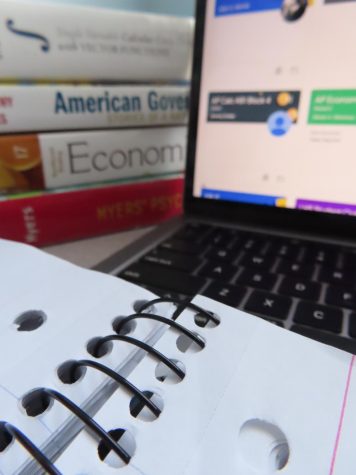
The new flipped classroom implementation with video lectures has been a change to the traditional classroom environment. This adjustment has led to contrasting experiences for teachers and students, some better than others. In some cases, well intentioned teachers have been unaware of the excessive homework burden video lectures have placed on students. On the other hand, students acknowledge that although at times difficult to manage, the return to in-class school is an ongoing process. “I don’t think that we’re ever going to have a system that works for everyone,” Draffin said. “We’re still getting used to this and still figuring it out a little more.”
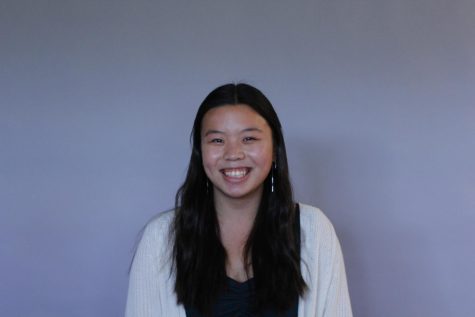
Kelcie is a senior at Lowell who can be found in the journ room working, drinking coffee, and listening to music. Her older brother once mentioned that there are only three guarantees in life: death, taxes, and Kelcie not waking up to her alarms. She also happens to have a paradoxical relationship with chicken… go figure.

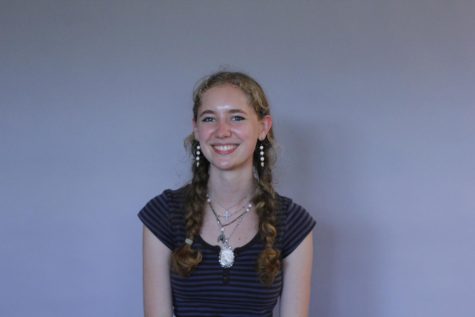
Marlena is a senior at Lowell. When she isn't at school she's probably at the lab, watching a movie, or sitting on the sidewalk listening to music (usually Björk).
